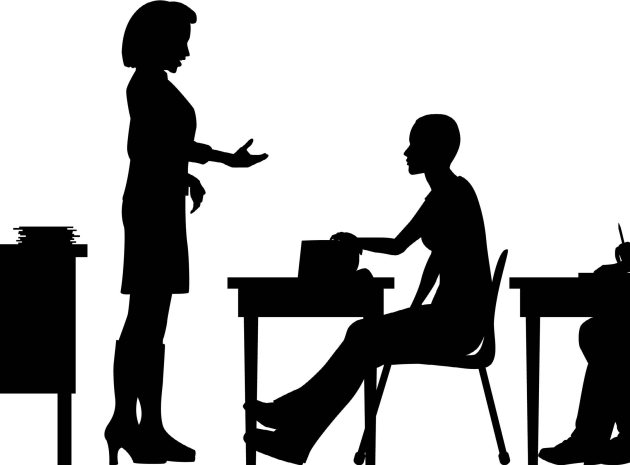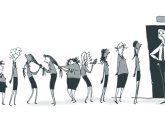Q. It seems as though all the talk in education these days revolves around technology – every day I hear about some new development or other that is supposed to transform teaching and learning and I’m sure that for new, young graduates just starting a career in education, this is very exciting. I’m in my late forties, however; an old-fashioned mobile and a clunky but serviceable PC are the extent of my gadget ownership. My students seem to enjoy my classes, and achieve at least their expected results. Is there really any point in me converting to the whole ‘e-learning revolution’ at this stage of the game?
A. Oh my goodness, yes, yes, YES! Sorry, does that sound overly enthusiastic? Seriously, you are missing out.
Ten years ago, I’d have been as sceptical as you sound now about the e-learning revolution. Back then, it seemed merely to replicate what we were already doing in mainstream schools. Today that has reversed, and what’s been learnt in e-pedagogy and evidenced with measurable gains in engagement and attainment, is being brought back into schools.
The simplest model is that of the ‘flipped classroom’. Students learn foundation content in their own time and at their own pace, often at home using a computer – and then practise and apply that learning when they return to the classroom, under their teacher’s expert guidance. It’s ‘flipped’, therefore, because the instruction takes place at home, and the ‘homework’ in the classroom. Evidence suggests youngsters get through the instruction in half the time it would take you to deliver it in class, and of course, they can replay it, rework it, and review it over and over again, according to their unique needs.
In the classroom, therefore, you have more time to develop conceptual and collaborative learning, and intervene in a responsive manner to meet individual or small group needs. You get time to manage the class for acceleration, remediation or differentiation as required. If the home delivered instructional materials have in-built assessment, you can pre-select the individuals or small groups who haven’t mastered the learning objectives and target them directly.
It’s about less marking and more assessment; maximising the use of your time with individuals; achieving personalised teaching and learning; and focusing more on creative, conceptual, collaborative, project-based learning and building learning power skills. You know, those attributes that universities and employers are forever demanding…
Utopia? Well, actually, no; because flipped classrooms are already in action here and in the US. In Ohio, for example, urban public high school drop-outs – youngsters with enormously complicated and chaotic backgrounds – are being re-engaged with their learning and accelerating through to their high school graduation (recognised in the UK as equivalent to 5 A* to C inc E&m) in EdisonLearning’s Magic Johnson Bridgescape Academies, which are totally flipped.
As mad as it sounds, each Bridgescape Academy houses 100 students, aged 14 through to 21, in a single learning space with four subject specialist teachers. EdisonLearning’s eCourse programmes drive the instructional learning and supply assessment for every learning objective covered. Teachers follow the data dynamically; celebrating the progress achieved and delivering focused teaching for any gaps. Timetabled large group conceptual teaching sessions run each day, with some student-led, project-based learning that varies between subject, cross-curricular or community facing activities each week. Add in some MFL, PE, Creative Art, Tech or vocationally orientated options as electives and you’ve got a broad balanced curriculum. Bingo! It’s development of 21st century skills and well-rounded individuals. It meets statutory provision, it’s raising attainment and it’s delivered in a cost and time effective manner. And moreover, the teachers are not on their knees by the end of the week. They’re using the technology to work smarter not harder.
And it’s happening here in the UK, too. There’s evidence of ‘normal’ year 9s using the same US materials in genetics and turning in the best in-school assessments the school has ever seen. The EdisonLearning eCourses are available in maths, English and over 100 other subject areas, so other schools are getting on board to co-develop projects to introduce flipped learning techniques for their students too.
The US evidence suggests substantial attainment gains, which is great – but what’s exciting for me is the opportunity to do the fun, more creative stuff in class and seeing students really getting access to every opportunity to learn.
Finally, technology is providing educational dividends – and so this is one revolution, I’d recommend you don’t miss out on!
Additional Resources
Getting smart: how digital learning is changing the world, Tom Vander Ark (Jossey-Bass)
About the Expert
Eileen Field is director of achievement, online and virtual learning, at Edisonlearning (edisonlearning.net). She has held a number of senior leadership roles in secondary schools and in 2004 was invited to design a nationwide internet school to serve out-of-school-learners, eventually becoming the head teacher of the only virtual secondary school in the uk. you can contact her directly at eileen.field@edisonlearning.com.









